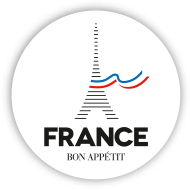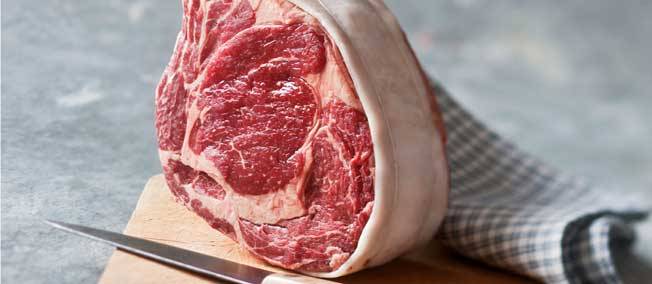
THE FRENCH
FOOD
INDUSTRY'S PORTAL
Webzine
taste it to info

French butchery: a series of serious cuts
News /
Friday 12 June 2015
Traditionally, French beef is not aged, though influence from other countries is becoming apparent in certain French restaurants and with some butchers.

copyright: Wikipedia Commons
Bavette
Bavette is a term that can be fickle, as it actually refers to two different cuts. Bavette d’aloyau comes from the plate or belly of the animal, including the diaphragm muscle. The bavette de flanchet is a single muscle from the flank region.
Both bavettes exhibit a coarse, moderately fatty texture with a generous amount of flavor. These cuts are best when cooked rare to avoid stringiness or toughness. To downplay chewiness, it is best served cut against the grain. Bavette is traditionally served with shallot sauce in France.
Filet
Filet tends to be one of the most expensive cuts. It is very tender and does not contain much fat, which renders it less flavorful than some other cuts. French butchers have a solution to this problem: by wrapping the filet in fat – a preparation known as tournedos – the filet becomes much more flavorful. Depending on how large the filet is cut, it can either be seared or roasted.
Faux-filet
The faux-filet (false fillet) is also known as the contre-filet because it can be found just against – contre – the “true” filet. Tender and flavorful, the faux-filet is preferred amongst beef lovers over the filet; while it is slightly less tender, it is far more flavorful.
In France, faux-filet is usually sold with a layer of fat attached. This fat will melt slightly as the steak cooks and add flavor. Excess fat can be removed from the steak once cooked.
Rumsteak
Rumsteak is a chewy, flavorful cut whose name comes from the English rump steak; it is found in the upper portion of the leg. Rumsteak is occasionally sold with nerves and silverskin attached, which should be removed before cooking.
Rumsteak is made up of several portions including the heart and the filet. The heart of the rumsteak is often used for steak-frites, while the filet de rumsteak – also known as the pavé de rumsteak – looks like a filet and is often served with pepper sauce.
Entrecôte
The entrecôte is found between the ribs. The heart or noix of the entrecôte is made up of the center two muscles of this cut, which in its whole form contains a total of four muscles.
The entrecôte can be quite marbled depending on the variety of cattle it comes from. It tends to be very red in color, and when properly cut, it will have a line of fat along the edge, which adds moisture and flavor during cooking.
Onglet
Onglet, occasionally known as “the butcher’s tenderloin” is – as its nickname suggests – a tender cut whose appearance often belies its delicious taste: the cut, found between the kidneys, turns dark quite quickly once removed from the animal.
Considered offal in France, onglet is one of the few French cuts that is systematically aged. It should be served rare to avoid toughness.
Aiguillette
Aiguillettes are fine strips of beef meat cut from the beef leg. The incomparable taste and delicacy of this cut makes the aiguillette a high-end product with a unique character.
In France, aiguillettes are usually served either roasted or grilled.”





